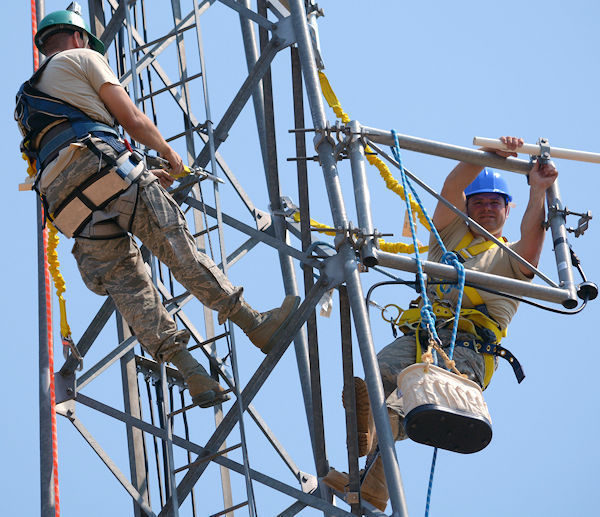Fall Protection Systems (Part 2)
Vertical Positioning-Device Systems
A positioning device is defined in 1926.500(b) means a body belt or body harness system rigged to allow an employee to be supported on an elevated vertical surface, such as a wall, and work with both hands free while leaning. The system is used only when the work surface it vertical.
These devices are designed specifically to stop a worker from falling from a static, head-up position. Under 1926.502(e), a positioning device must limit the fall to 2 feet.
- Anchorage: The positioning devices must be secured to an anchorage capable of supporting at least twice the potential impact load of an employee's fall or 3,000 pounds (13.3 kN), whichever is greater.
- Connectors: Connectors must have a minimum strength of 5,000 pounds. Snap hooks and D-rings must be proof-tested to a minimum load of 3,600 pounds without deforming or breaking.
- Body support: A body belt is acceptable as part of a positioning-device system. However, it must limit the arresting force on a worker to 900 pounds and it can only be used for body support. A full-body harness is also acceptable and must limit the arrest force to 1,800 pounds. Belts or harnesses must have side D-rings or a single front D-ring for positioning.
The difference between a restraint system and a positioning device:
A restraint system is one that prevents a worker from falling any distance. In contrast, for construction work covered by 29 CFR Part 1926 Subpart M (Fall Protection), a "positioning device" is defined in 1926.500(b) as "a body belt or body harness system rigged to allow an employee to be supported on an elevated vertical surface, such as a wall, and work with both hands free while leaning." These devices are designed specifically to stop a worker from falling from a static, head-up position. Under 1926.502(e), a positioning device must limit the fall to 2 feet.
Appropriate body belt use in aerial lifts
An employee can use a body belt when the body belt is used in a restraint system -- a system that prevents the worker from being exposed to any fall.
A body belt is permitted to be used in a positioning device. However, since positioning devices are defined as systems used to protect workers on vertical surfaces, positioning devices are not permitted in bucket-type aerial lifts, where the work surface is horizontal working from an aerial lift. An employee must be protected by a personal fall arrest system. Under 1926.502(d), body belts are not permitted to be used in a personal fall arrest system, and the requirement is not negated by the use of a positioning device that limits any fall to 2 feet.
Knowledge Check Choose the best answer for the question.
6-2. Which fall protection system must limit a fall to no more than two feet?
You forgot to answer the question!

